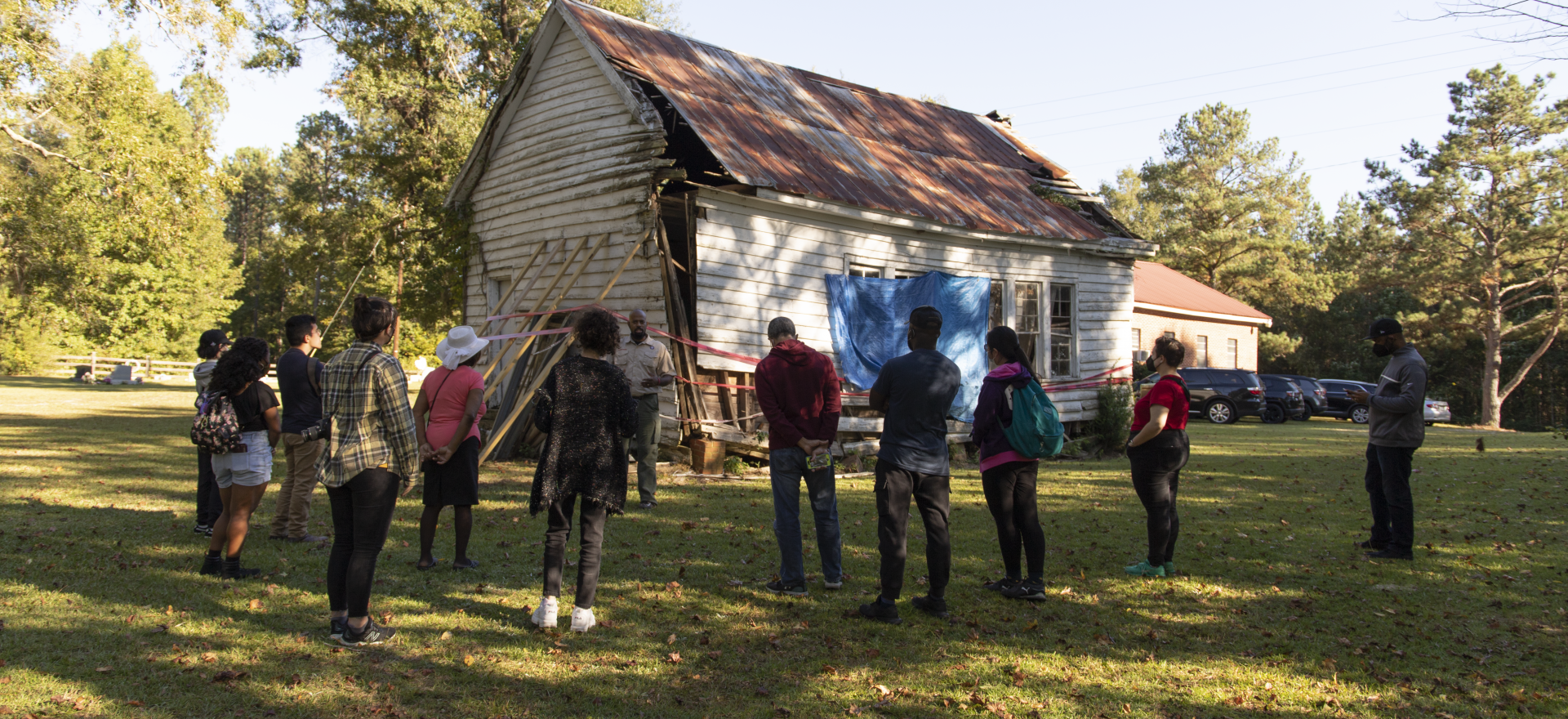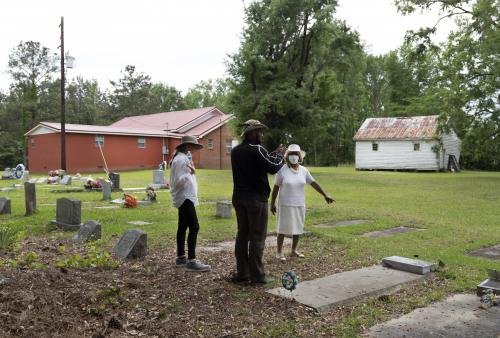The University of Pennsylvania and Tuskegee University are both committed to the development of a sustainable long-term preservation plan for the St Paul Missionary Baptist Church, The Armstrong School, and its cultural landscape. This effort is part of a larger, longer-term partnership between the two schools.
Already, the Tuskegee-Penn partnership has secured a small grant for emergency stabilization of the Armstrong School from the J.M. Kaplan Fund and the National Trust for Historic Preservation. Since Spring 2021, Tuskegee architecture students and Penn historic preservation students have worked to document and record the conditions of The Armstrong School in preparation for future preservation planning. Students have produced measured drawings of the school building and a list of recommendations for future interventions. This project is also part of an effort to strengthen the relationship between Tuskegee University’s Robert R. Taylor School and rural communities in Macon County. Re-establishing these ties should ultimately lead to stronger stewardship plans and larger national audience.
The Armstrong School served as a one-room schoolhouse from 1906 to 1954. Following the Supreme Court’s 1954 Brown v. Board of Education ruling to integrate schools, children from the Armstrong community were transported and/or bussed three miles away to another South Macon County school, Cotton Valley School. Cotton Valley School was a semi-private, grade school established for African American children in the area by the American Missionary Association in 1884 at the behest of Booker T. Washington. The main school building was burned in 1961. Classes continued in the teachers' cottage and the vocational agriculture building for grades one through six until c. 1967 when the school was consolidated with the Macon County Training School in the nearby Roba community.
Despite being a place of community gathering, the legacy of the St. Paul Missionary Baptist Church and The Armstrong School also have significance related to the unethical medical history of the U.S. Public Health Service Syphilis Study, Macon County, Alabama. The church served as a “roundup” site for health officials to meet community members and transport them to Tuskegee or carry out examinations in the farming communities of Macon County. Participants who were a part of the study’s control group are buried in the graveyard on site and their descendants are congregants of the Church.






